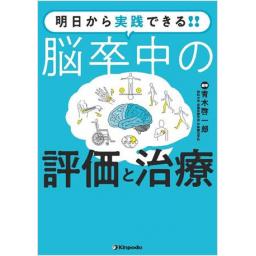1) Nichols-Larsen DS, et al. Factors influencing stroke survivors' quality of life during subacute recovery. Stroke. 2005 ; 36 : 1480-1484.
2) Rand D, et al. Disparity between functional recovery and daily use of the upper and lower extremities during subacute stroke rehabilitation. Neurorehabil Neural Repair. 2012 ; 26 : 76-84.
3) 矢崎潔, 他. 手の運動を学ぶ-手の役割と手の機能解剖との関係から運動を紐解き, 臨床に活かす. 三輪書店. 2017. pp.6-12.
4) Arbib. MA, et al. Coordinated control programs for movements of the hand. Experimental Brain Research. 1985 ; 10 : 111-129.
5) Ungerleider LG, et al. Two cortical visual systems. In : Ingle DJ, et al. (Eds). Analysis of visual behavior. Cambridge : The MIT Press. 1982. pp.549-586.
6) McCrea PH, et al. Biomechanics of reaching : clinical implications for individuals with acquired brain injury. Disabil Rehabil. 2002 ; 24 : 534-541.
7) Jeannerod M. The timing of natural prehension movements. J Mot Behav. 1984 ; 16 : 235-254.
8) Jeannerod M. The formation of finger grip during prehension. A cortically mediated visuomotor pattern. Behav Brain Res. 1986 ; 19 : 99-116.
9) Kent. BE. Functional anatomy of the shoulder complex. A review. Phys Ther. 1971 ; 51 : 867-887.
10) Inman VT, et al. Observations of the function of the shoulder joint. 1944. Clin Orthop Relat Res. 1996 ; (330) : 3-12.
11) Camargo PR, et al. Kinesiologic considerations for targeting activation of scapulothoracic muscles-part 2 : trapezius. Braz J Phys Ther. 2019 ; 23 : 467-475.
12) Borsa. PA, et al. Scapular-Positioning Patterns During Humeral Elevation in Unimpaired Shoulders. J Athl Train. 2003 ; 38 : 12-17.
13) 信原克哉. 肩 その機能と臨床 第4版. 医学書院, 2012. pp.38-40.
14) Goto A, et al. In vivo elbow biomechanical analysis during flexion : three-dimensional motion analysis using magnetic resonance imaging. J Shoulder Elbow Surg. 2004 ; 13 : 441-447.
15) Moritomo H, et al. Interosseous membrane of the forearm : length change of ligaments during forearm rotation. J Hand Surg Am. 2009 ; 34 : 685-691.
16) Nakamura T, et al. Dynamic changes in the shape of the triangular fibrocartilage complex during rotation demonstrated with high resolution magnetic resonance imaging. J Hand Surg Br. 1999 ; 24 : 338-341.
17) Volz RG, et al. Biomechanics of the wrist. Clin Orthop Relat Res. 1980 ; (149) : 112-117.
18) 中村隆一, 他. 基礎運動学. 医歯薬出版. 2003. p.231.
19) Tubiana R, et al. The anatomy of the extensor apparatus of the fingers. Sug Clin N Amer. 1964 ; 44 : 897-906.
20) Mayer NH. Clinicophysiologic concepts of spasticity and motor dysfunction in adults with an upper motoneuron lesion. Muscle Nerve Suppl. 1997 ; 6 : S1-13.
21) Lance JW. Symposium synopsis. In Feldman RG, et al. (Eds). Spasticity : disor- dered motor control. Year Book Medical Publishers. 1980. pp.485-494.
22) 大串幹. 脳卒中上肢痙縮に対する装具療法-ボツリヌス療法に関連して-. The Japanese Journal of Rehabilitation Medicine. 2020 ; 57 : 810-820.
23) Carr JH, et al. Stroke Rehabilitation. Butterworth Heinemann. 2003. pp.168-171.
24) Bard G, et al. Recovery of voluntary motion in upper extremity following hemiplegia. Arch Phys Med Rehabil. 1965 ; 46 : 567-572.
25) Heller A, et al. Arm function after stroke : measurement and recovery over the first three months. J Neurol Neurosurg Psychiatry. 1987 ; 50 : 714-719.
26) Nakayama H, et al. Recovery of upper extremity function in stroke patients : The Copenhagen stroke study. Arch Phys Med Rehabil. 1994 ; 75 : 394-398.
27) Kwakkel G, et al. Probability of regaining dexterity in the flaccid upper limb : impact of severity of paresis and time since onset in acute stroke. Stroke 2003 ; 34 : 2181-2186.
28) Signe Brunnstrom MA. Motor testing procedures in hemiplegia : based on sequential recovery stages. Phys Ther. 1966 ; 46 : 357-375.
29) 二木立. 脳卒中患者の障害の構造の研究- (第1報) 片麻痺と起居移動動作能力の回復過程の研究. 総合リハビリテーション. 1983 ; 11 : 465-476.
30) Fugl-Meyer AR, et al. The post-stroke hemiplegic patient. 1. a method for evaluation of physical performance. Scand J Rehabil Med. 1975 ; 7 : 13-31.
31) Winters C, et al. Generalizability of the Proportional Recovery Model for the Upper Extremity After an Ischemic Stroke. Neurorehabil Neural Repair. 2015 ; 29 : 614-622.
32) van der Vliet R, et al. Predicting Upper Limb Motor Impairment Recovery after Stroke : A Mixture Model. Ann Neurol. 2020 ; 87 : 383-393.
33) 前田真治. 【臨床に役立つ脳卒中の予後予測 どこまで機能回復を望めるか】我々が用いている脳卒中の予後予測 (IV). Journal of Clinical Rehabilitation. 2001 ; 10 : 320-325.
34) Santisteban L, et al. Upper Limb Outcome Measures Used in Stroke Rehabilitation Studies : A Systematic Literature Review. PLoS One. 2016 ; 11 : e0154792.
35) 日本脳卒中学会脳卒中ガイドライン委員会. 脳卒中治療ガイドライン 2021. 協和企画. 2021.
36) Hatem SM, et al. Rehabilitation of Motor Function after Stroke : A Multiple Systematic Review Focused on Techniques to Stimulate Upper Extremity Recovery. Front Hum Neurosci. 2016 ; 10 : 442.
37) Taub E, et al. A placebo-controlled trial of constraint-induced movement therapy for upper extremity after stroke. Stroke. 2006 ; 37 : 1045-1049.
38) 小林賢祐, 他. 脳卒中片麻痺上肢に対する併用促通反復療法 (電気・振動刺激併用) の治療開始時期と麻痺重症度と麻痺改善量との関連. 理学療法科学. 2020 ; 35 : 639-646.
